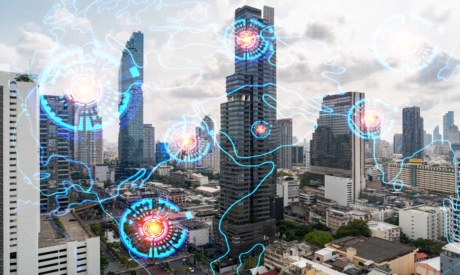To read the full report, please download the PDF above.
Executive summary | US Inflation Reduction Act (IRA) one year on
Early innings of a renewables capex supercycle
What is the IRA not addressing?
Energy trilemma dovetails naturally with the IRA
- One year on since US President Biden signed the landmark IRA into law and we hold conviction that we are in the early innings of a renewables capex supercycle.
- There’s been no shortage of figures attesting to the cosmic transformation of the “Made in America” clean energy renaissance. More than 80 clean energy projects have been announced, more than 185GW of clean power capacity pledged (equivalent to ~80% of the current clean power capacity in the US), more than 170,000 clean energy jobs created, over USD4.5bn in consumer savings made, and nearly USD300bn of clean energy investments (equivalent to the previous seven years combined) committed.
- Following the post-WWII US conventional energy boom, and US shale’s recent prominence, the sheer magnitude of the IRA’s depth and breadth marks the beginning of the third American energy revolution.
- Yet despite its unrivalled merits, we ask what the IRA is not addressing?
- Implementation, political and regulatory hurdles abound. While the wave of project announcements is encouraging, the big challenge will be getting them built – clean energy projects face a multitude of obstacles across the supply chain, from raw material constraints and labour shortages to permitting issues and long lead times for grid connection.
- Politically, Republican victories in the 2024 elections would set up challenges to IRA financing provisions.
- In a societal context, nothing in the IRA attempts to price the social costs of emissions, which include climate events like this summer’s intense heat waves, that take a pressing toll on federal relief funds.
- Mechanically, out of the IRA’s scope is offtake demand management for certain clean energies (such as hydrogen), which is critical for projects to come to a final investment decision (FID).
- Conceptually, the IRA is more heavily focused on “carrots” than “sticks”, with some of the more complex policy designs (such as a nationwide carbon pricing and trading scheme) out of scope, for now.
- Overall, one year on and the data suggests that corporates are just dipping their toes in and the real floodgates of investment is set to precipitously accelerate once the partisan rancour settles down.
- What excites us most surrounding the IRA’s framework is its unparalleled ability to help the US meet its climate targets, keep prices affordable whilst ensuring the security of supply – succinctly put, the energy trilemma pillars of (i) affordability, (ii) security and (iii) sustainability, naturally dovetail with this goldilocks piece of clean energy regulation.
- Granted, the IRA is not a one-stop shop for a rapid energy transition – one piece of legislation cannot single-handedly solve the multi-dimensional net zero equation – but it does represent an unprecedented, long-term, stable decarbonisation policy.
- All in, with the largest climate legislation in US history now turning one years old, it’s been a birthday to celebrate.



